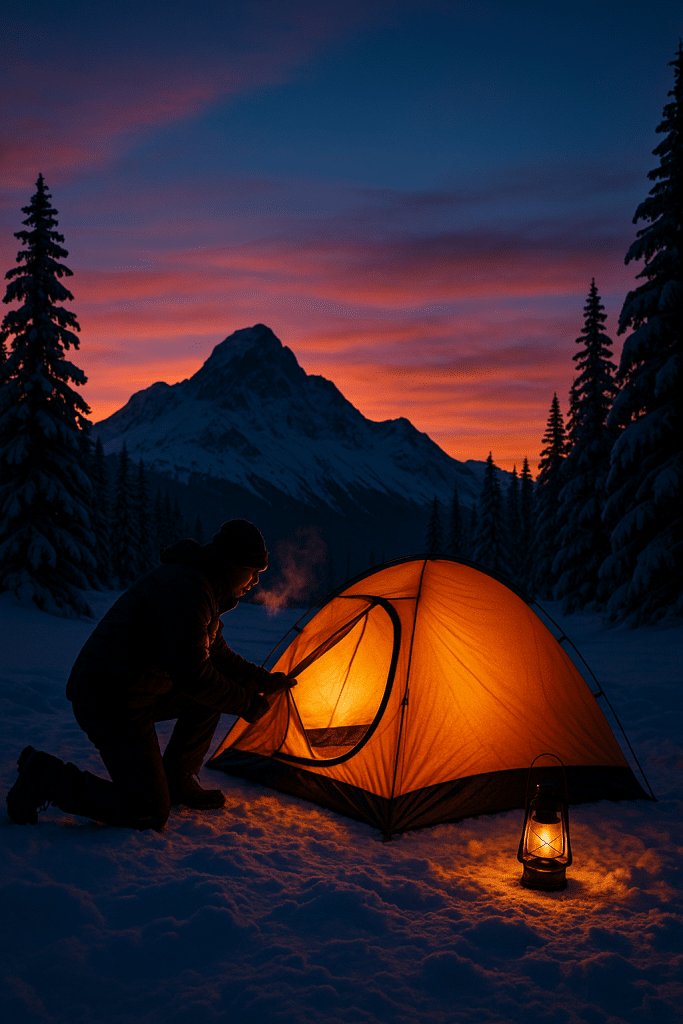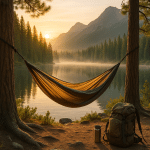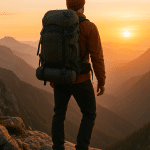Winter camping is no walk in the park—it tests your grit, your preparation, and, most importantly, your gear. If you’re an outdoor enthusiast dreaming of fresh snow, crisp air, and starry winter nights, you already know that having the right equipment can make the difference between a memorable adventure and a chilly misadventure. That’s why understanding which winter camping essentials to pack is critical.
From picking the perfect shelter to mastering insulation for bone-chilling nights, and from reliable cooking gear to safety tools that keep you out of harm’s way, this comprehensive guide dives deep into seven must-have items every winter camper should consider. Whether you’re a seasoned backcountry explorer or a beginner eager to brave the cold, these winter camping essentials will keep you comfortable, safe, and ready for anything winter throws at you.
In this guide, I’ll share my first-hand experience and expert knowledge on how to equip yourself properly with trusted products like the MSR Hubba Hubba NX 2-Person Tent, Western Mountaineering AlpinLite Sleeping Bag, Therm-a-Rest NeoAir XTherm Sleeping Pad, Osprey Atmos AG 65 Backpack, Petzl Actik Core Headlamp, MSR PocketRocket 2 Stove, and Black Diamond Guide Snow Shovel. Alongside gear insights, I’ll provide practical tips on choosing suitable gear for cold weather, setting up camp in snow, navigating safely, and preparing to stay warm. So grab your hot cocoa, and let’s gear up!
Understanding Winter Camping Challenges and Preparation
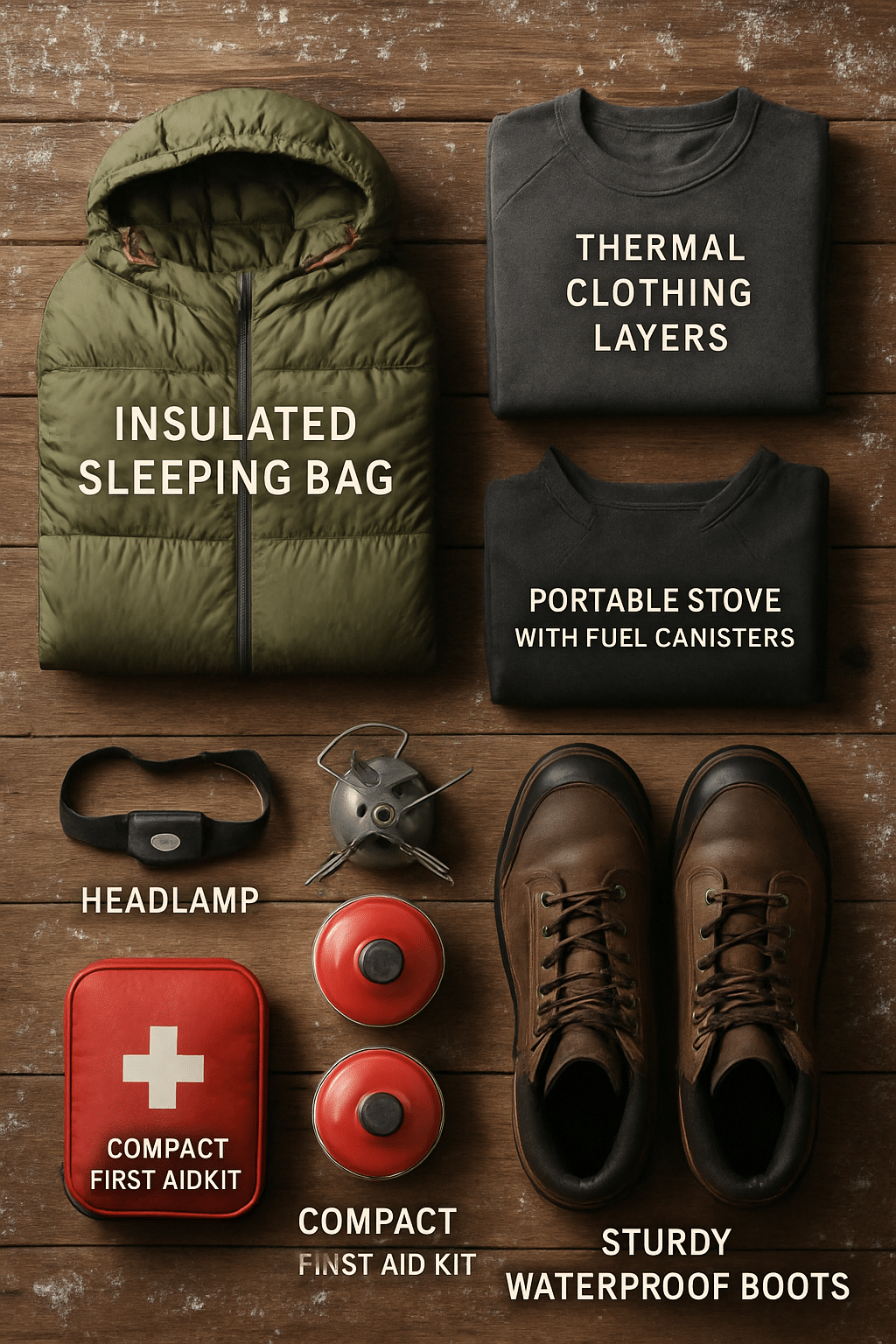
Winter camping presents unique hurdles that go far beyond what you encounter in milder conditions. It’s the unforgiving cold, the shorter daylight hours, the risk of snow buildup, and the ever-present danger of frostbite or hypothermia. To embark confidently on your winter adventure, you need a solid understanding of these challenges and thorough prep before heading out.
The Importance of Proper Gear in Cold Conditions
When temperatures dive below freezing, your gear becomes your lifeline. Choosing the right equipment means understanding how cold affects your body, your shelter’s performance, and the reliability of your tools. For instance, sleeping bags that perform well in temperate conditions might fall short in the winter cold without adequate insulation. Similarly, a tent designed for three-season use needs modification to handle snow and wind.
A well-insulated sleeping pad, like the Therm-a-Rest NeoAir XTherm, is crucial because it provides a barrier not just from rough ground but also from heat loss through conduction—a major cause of chilling overnight. Additionally, layerable clothing made from moisture-wicking and thermal materials keeps you dry and warm while preventing overheating and sweating.
Assessing Weather, Terrain, and Safety Considerations
Before you grunt through snowdrifts, always check the forecast with a focus on temperatures, snowfall, wind speeds, and potential avalanche risks. Terrain can change rapidly under snow, hiding crevices, frozen water bodies, or unstable surfaces. Sites with natural windbreaks like dense tree clusters or rocky outcrops can save you from buffeting wind and drifting snow, reducing your gear load.
Furthermore, winter’s shorter days require planning your itinerary wisely—start early and establish your camp before dusk. Bring backup lighting and navigation tools because snow-covered trails can erase familiar landmarks or paths. Finally, inform someone reliable about your plan and carry communication devices suitable for the cold.
Selecting the Right Shelter for Winter Conditions
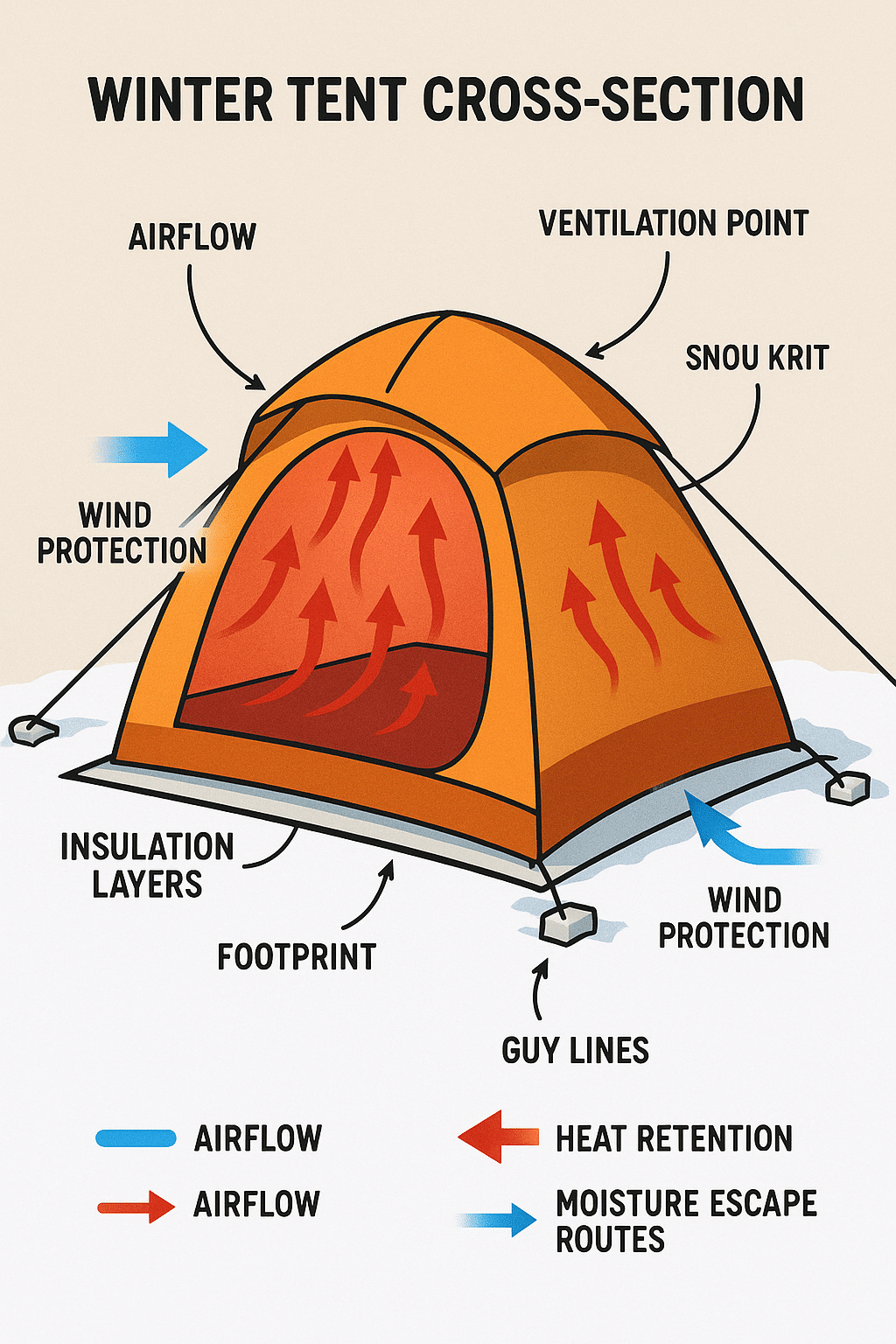
Your shelter is your fortress against winter’s harshness—choosing well is paramount to your survival and comfort. Let’s explore what to look for and why.
Choosing Between Four-Season and Lightweight Tents
Four-season tents are purpose-built to withstand snow loads, high winds, and frigid temps. They typically feature stronger poles, steeper walls to shed snow, and full-coverage rainflies that also serve as snow shields. However, they come with a weight penalty, which might matter on long hikes.
On the other hand, lightweight three-season tents, like the MSR Hubba Hubba NX 2-Person Tent, offer impressive versatility. While it’s rated as a 3-season tent, many crafty winter campers use it successfully with added precautions—such as pitching in well-sheltered areas to avoid heavy snow load.
MSR Hubba Hubba NX 2-Person Lightweight Backpacking Tent Overview
The MSR Hubba Hubba NX strikes a remarkable balance for backpackers who want a roomy, lightweight, yet sturdy tent. Weighing just over 3 pounds (1.6 kg), this tent features Easton® Syclone™ poles for excellent durability, a rectangular floor area of 29 square feet, and a peak height of 39 inches, so you’re not cramped when moving inside.
Its DuraShield™ rainfly and taped seams deliver solid weather protection, keeping snow and rain at bay. Setup is a breeze thanks to a unified hub-and-pole system with color-coded clips—a real boon when your fingers are cold or gloved.
To winterize this tent, select a site away from heavy snow buildup potential, create a packed snow platform for stability, and ventilate properly to minimize condensation—trapped moisture can freeze into icy discomfort inside.
Insulated Sleeping Systems: Staying Warm Through the Night
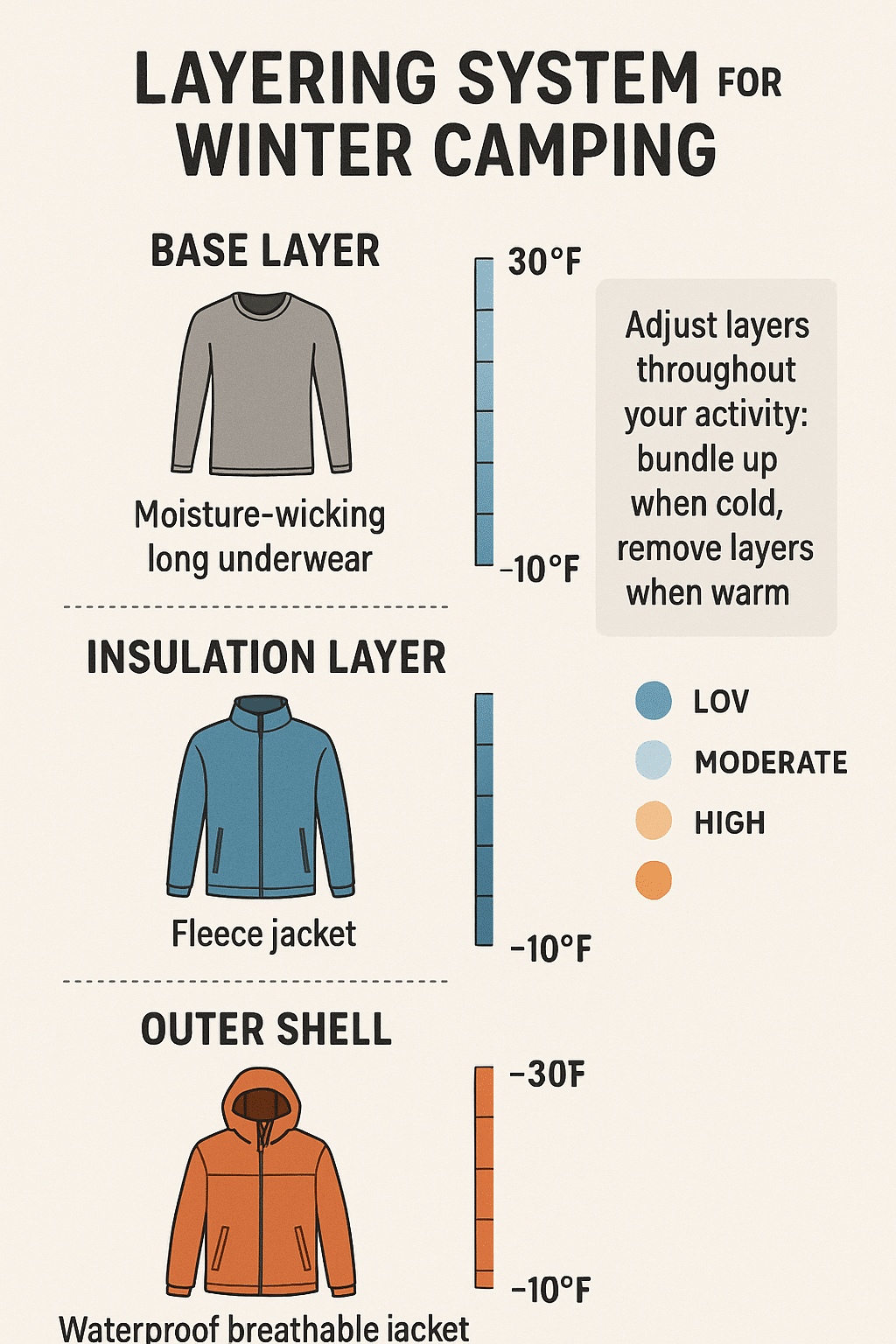
Arguably the most critical winter camping essential is your sleeping setup. After a tough day trekking through snow, you need restful, warm sleep to maintain energy and core body temperature.
Choosing the Ideal Winter Sleeping Bag
Winter sleeping bags need to insulate effectively and retain warmth without adding unmanageable bulk. The Western Mountaineering AlpinLite Sleeping Bag stands out as a preferred choice for those demanding lightweight warmth.
Western Mountaineering AlpinLite Sleeping Bag Features and Benefits
With a 20°F (-7°C) temperature rating, the AlpinLite balances warmth and weight perfectly for most winter camping environments. Its 850+ fill-power high-quality goose down filling delivers an exceptional warmth-to-weight ratio—the bulk compresses easily while trapping enough heat to fend off the cold.
Its wide cut offers comfort without being baggy, preventing cold spots, and the full-length YKK zipper includes an insulated draft tube that seals out cold air effectively. The breathable 12-denier ripstop nylon shell provides weather resistance without compromising too much on weight.
This sleeping bag weighs about 1 lb. 15 oz. (for the 6 ft. left-zip version), making it easy to carry but plenty warm for many below-freezing nights. It comes with a lightweight stuff sack and a more ventilated mesh storage bag to keep down loft in storage.
Insulated Sleeping Pads and Their R-Value Importance
Sleeping pads prevent heat loss through conduction and increase comfort on cold, uneven ground. The R-value indicates insulation level—anything above 5 is generally good for winter use.
Therm-a-Rest NeoAir XTherm Insulated Sleeping Pad Insights
The Therm-a-Rest NeoAir XTherm combines a thermal reflective layer with Triangular Core Matrix air chambers, optimizing heat retention and weight savings. The 7.3 R-value rating places it among the best sleeping pads for cold weather.
At just 15.5 ounces for a regular size and a packable design, it’s a favorite for winter backpackers who want to reduce bulk without sacrificing warmth. Its stability and comfort allow you to rest longer and wake up refreshed in freezing environments.
The Role of Sleeping Bag Liners and Thermal Blankets
Adding a sleeping bag liner increases warmth by 5 to 15°F while helping keep your sleeping bag clean—critical for long maintenance. Thermal blankets or emergency bivy sacks provide another layer of insulation and wind protection during emergencies or extra-chilly nights.
Consider a lightweight fleece or silk liner for moisture wicking and extra warmth inside your sleeping bag. Combining these layers with a high-quality sleeping bag and pad completes your insulated sleeping system.
Backpacks Designed for Winter Camping
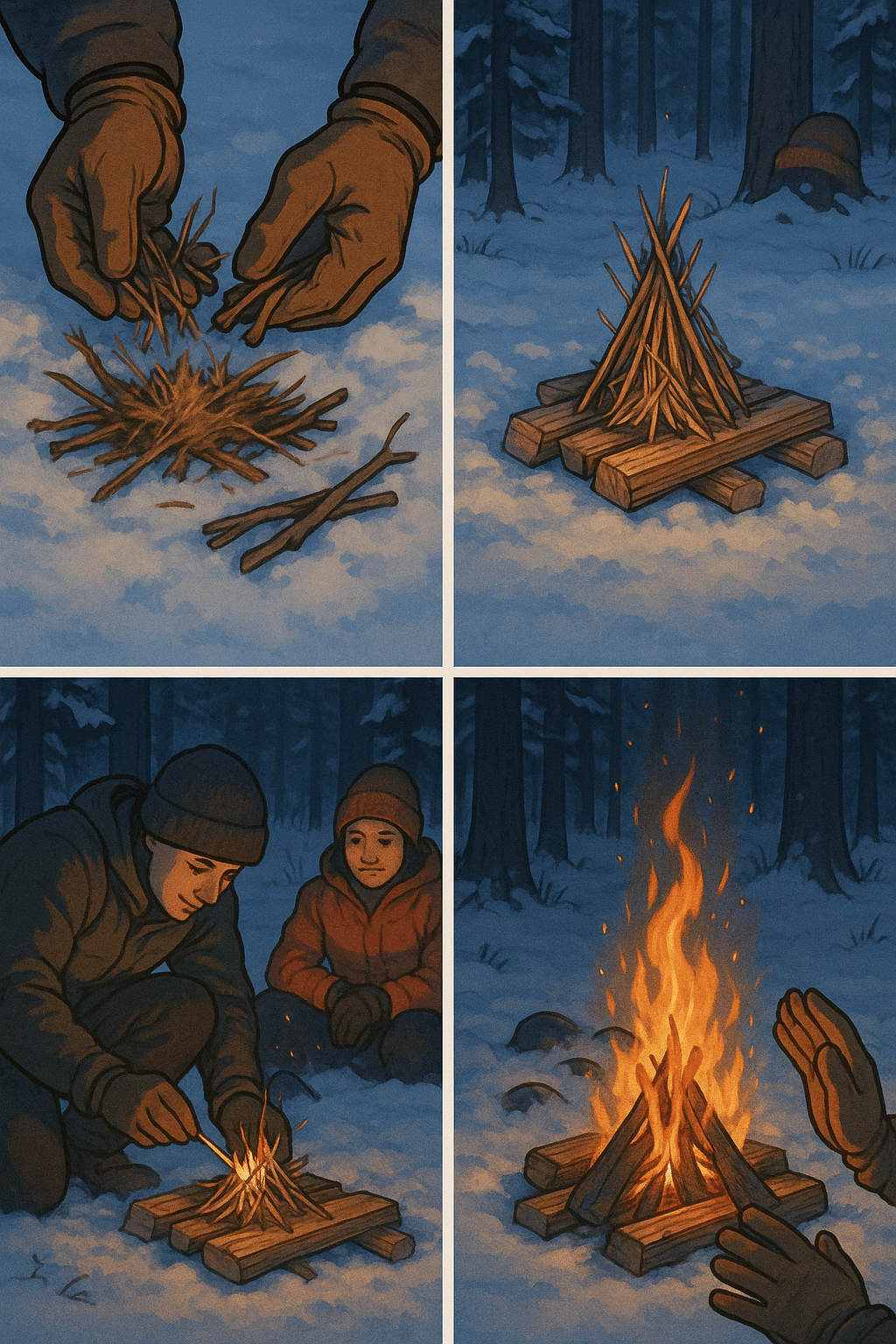
Your backpack is more than a pack; it’s the carrier of your survival. For winter excursions, it must be comfortable, weather-resistant, and roomy enough for bulky gear.
Features to Look for: Capacity, Comfort, and Weather Resistance
Look for padded straps, adjustable hip belts, and a well-ventilated back panel to reduce sweaty discomfort. A capacity around 60-70 liters, like the Osprey Atmos AG 65 Backpack, offers room for winter essentials plus food, water, and safety gear.
Water-resistant materials and integrated rain covers keep your gear dry. Specialized compartments for sleeping bags and hydration systems make organization easier.
Osprey Atmos AG 65 Backpack: Advanced Comfort and Storage Solutions
The Osprey Atmos AG 65 is notable for its Anti-Gravity suspension system, enveloping your torso and hips in 3D-mesh that breathes even with heavy loads. It features a removable sleeping bag compartment divider and dual side stretch-mesh pockets perfect for water bottles.
This pack’s raincover seals out snow and rain, which is essential during unpredictable winter weather. Its 65-liter capacity strikes a balance between space and manageable size for backcountry treks.
Essential Lighting and Navigation Tools
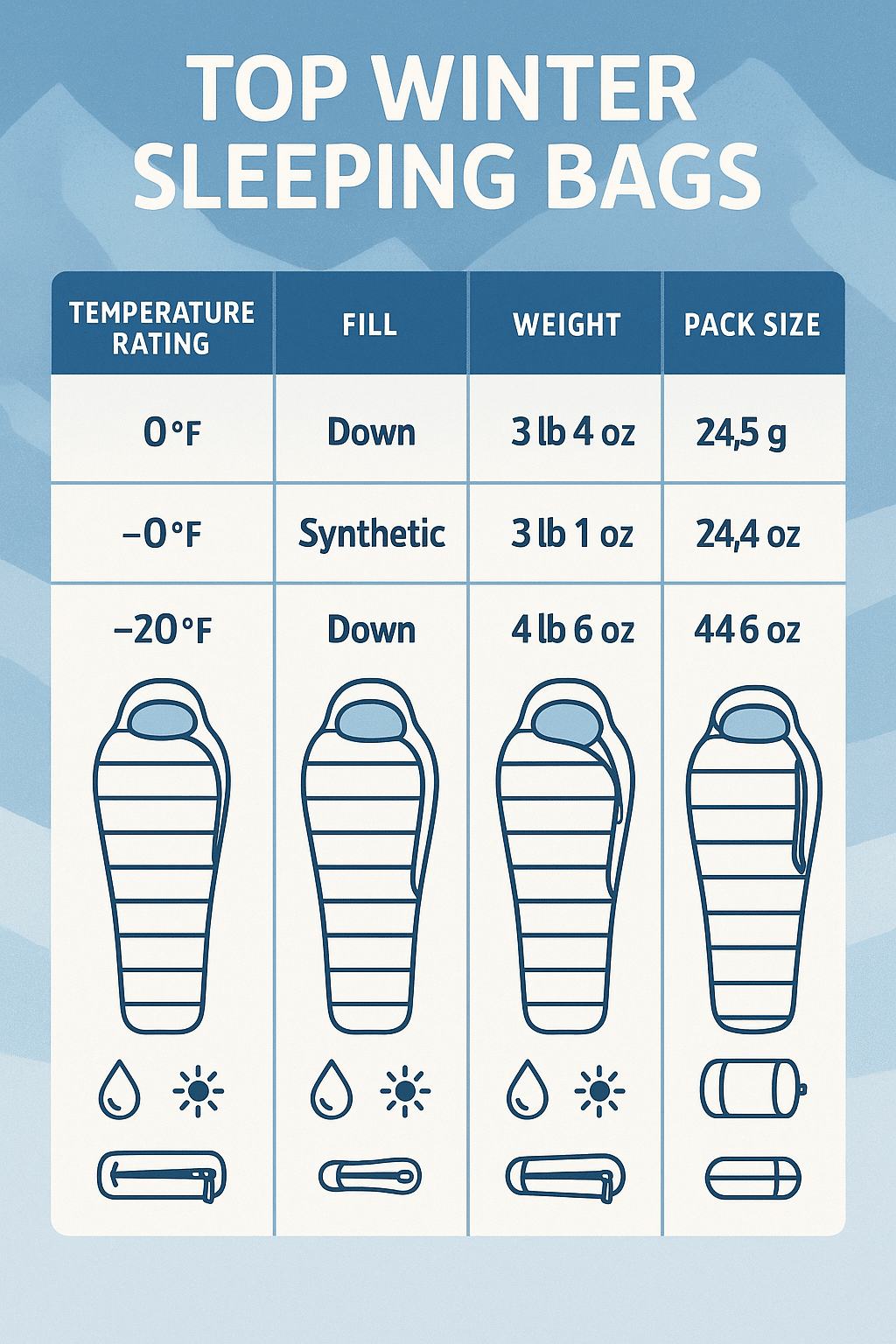
Short daylight and whiteout conditions make lighting and navigation critical to your winter camping success.
Choosing Headlamps with Brightness and Battery Life in Mind
Headlamps are hands-free and indispensable for setting camp, cooking, or nighttime navigation. Look for brightness levels around 400-600 lumens with multiple beam options.
Petzl Actik Core Headlamp: Versatility and Reliability
This headlamp offers up to 600 lumens, flood and mixed beams for different tasks, and a red light mode that preserves night vision and avoids disturbing others. The rechargeable CORE battery ensures extended operation, with backup AAA compatibility.
Its IPX4 water resistance means it performs reliably even in snow or drizzle. Plus, a reflective headband enhances your visibility in dark conditions—a smart safety feature.
Safe Navigation Alternatives for Winter Backcountry
In snow-covered landscapes, GPS devices with reliable cold-weather batteries, altimeters, and physical maps with compasses are must-haves. Familiarize yourself with reading topo maps under winter conditions, and always have a backup device.
Cooking and Hydration Gear for Cold Weather
Winter backcountry cooking needs stoves that operate reliably in cold, fuel-efficient systems, and safeguards against water freezing.
Efficient and Portable Winter Camping Stoves
The MSR PocketRocket 2 Stove is a standout choice, weighing a mere 2.6 ounces and boiling a liter of water in about 3.5 minutes.
MSR PocketRocket 2 Stove: Compact Cooking Power
Its folding pot supports and WindClip windshield enhance performance even in breezy winter conditions. Designed for canister fuel, the stove is reliable and easy to light, letting you whip up hot meals and drinks fast—key to combating the cold.
Pair your stove with insulated mugs, windshields, and light cookware to optimize cooking efficiency.
Protecting Water Supplies from Freezing
Hydration is critical. Use insulated water bottles, store hydration bladders inside your pack or sleeping bag at night, and consider chemical hand warmers around water containers to prevent freezing. Boiling snow with your stove for water is doable but requires vigilance to prevent spills.
Winter-Specific Clothing and Layering Systems
Clothing is your portable insulation system. Winter layering includes a moisture-wicking base layer, an insulating mid-layer, and a waterproof, breathable outer shell.
Key winter clothing essentials include thermal underwear, fleece jackets, down or synthetic insulated jackets, waterproof pants, insulated winter boots, and gaiters to keep snow out. Avoid cotton—it traps moisture and chills.
Footwear with insulation and waterproofness paired with gaiters like those made from Gore-Tex keeps your feet warm and dry during snow trekking.
Safety and Emergency Gear for Cold Weather Camping
Winter’s dangers are real—having the right safety gear can save your life.
Avalanche and Snow Safety Equipment
For backcountry trips, avalanche beacons, probes, and shovels are mandatory. The Black Diamond Guide Snow Shovel offers durability, ergonomic design, and a blade sized for efficient snow movement—essential for rescue operations or clearing camp.
Its lightweight aluminum build and compact fold make it easy to carry without sacrificing strength.
First Aid Kits and Emergency Fire Starters
Carry a comprehensive first aid kit tailored for cold-weather injuries such as frostbite and hypothermia. Include items like thermal blankets and chemical warmers.
Fire starters such as ferro rods or waterproof matches ensure you can build a fire even in damp conditions—a critical survival skill in winter.
Unique Insight: Leveraging Microclimates and Terrain Features to Optimize Warmth and Safety
Choosing a campsite is an art. By evaluating natural shelters like dense tree stands, rock outcrops, or south-facing slopes, you can reduce exposure to wind and capitalize on sun warmth. This helps lower gear requirements and sustains comfort longer.
Soft snow can be packed down to make flat platforms, improving tent stability and insulation. Combining this strategic site selection with your gear choice creates a synergy that maximizes survival and enjoyment.
Q1: What is the most crucial winter camping essential to stay warm?
The insulated sleeping system—comprising a winter-rated sleeping bag like the Western Mountaineering AlpinLite, a high-R-value insulated sleeping pad like the Therm-a-Rest NeoAir XTherm, and liners—is your best defense against the cold during sleep.
Q2: Can I use a three-season tent for winter camping?
Yes, with precautions. For instance, the MSR Hubba Hubba NX tent can be used in winter if you set it up carefully on a firm snow platform, avoid heavy snow accumulation, and ensure proper ventilation to minimize condensation.
Q3: How do I prevent water bottles from freezing on winter camping trips?
Use insulated bottles, store them inside your sleeping bag or pack during cold periods, and consider chemical hand warmers wrapped around the bottles to keep liquids from freezing.
Q4: What headlamp features are must-haves for winter camping?
Brightness of at least 400 lumens, multiple beam modes (flood and focused), long battery life with rechargeable options, water resistance, and a red light mode for preserving night vision.
Q5: What are essential safety items for winter backcountry camping?
Avalanche safety gear (beacons, probes, shovels like the Black Diamond Guide Snow Shovel), first aid kits with cold injury supplies, fire starters, emergency thermal blankets, and reliable navigation tools.
- Proper gear selection that balances weight, warmth, and durability is crucial for a successful winter camping trip.
- Insulated shelters like the MSR Hubba Hubba NX can work in winter with careful site selection and setup.
- A high-quality insulated sleeping system—including sleeping bag, pad, and liners—is essential to retain core warmth overnight.
- Packs such as the Osprey Atmos AG 65 offer ergonomic support and organization tailored for bulky winter gear.
- Reliable lighting and navigation tools, such as the Petzl Actik Core headlamp, improve safety and ease around camp.
- Efficient, compact stoves like the MSR PocketRocket 2 make hot meals possible even in freezing conditions.
- Safety equipment, especially avalanche rescue tools and fire starters, are non-negotiable in winter backcountry excursions.
Conclusion
Winter camping is a thrilling pursuit for outdoor enthusiasts willing to embrace the cold’s challenges. However, the difference between a memorable, exhilarating experience and a miserable one lies in preparation and gear choice. By investing intelligently in the seven must-have winter camping essentials discussed—the MSR Hubba Hubba NX Tent, Western Mountaineering AlpinLite Sleeping Bag, Therm-a-Rest NeoAir XTherm Sleeping Pad, Osprey Atmos AG 65 Backpack, Petzl Actik Core Headlamp, MSR PocketRocket 2 Stove, and Black Diamond Guide Snow Shovel—you’re setting yourself up for safety, comfort, and success.
Remember, knowledge paired with quality equipment is your best ally in the snow. Learn to interpret weather, optimize your campsite’s microclimate, layer clothing effectively, and always prioritize safety. With these practical gear insights and strategies in your winter camping toolkit, you’ll find the season’s bite turns into a cozy embrace.
Ready to pack your gear and hit the snowy trail? Let your winter adventure begin with confidence, knowing you are thoroughly equipped for whatever the wild throws your way!
For more detailed product specs, expert tips, and purchase options, check the official retailers linked within the article.

